Struggling with bland bean soup? You're not alone. Most home cooks make these 10 critical mistakes that leave bean and vegetable soup tasting flat. The good news: fixing them takes minutes, not hours. This guide reveals exactly what restaurant chefs do to create deeply flavorful bean soup - with practical, science-backed techniques anyone can use. Skip the confusing chemistry and get straight to the solutions that actually work.
Table of Contents
- Tip #1: Broth vs Stock - What Actually Matters for Bean Soup
- Tip #2: The 2-Minute Spice Toast That Changes Everything
- Tip #3: The Flavor Layering Mistake 90% of Cooks Make
- Tip #4: Acid Timing Secrets for Brighter Soup
- Tip #5: Fresh vs Dried Herbs - When to Use Which
- Tip #6: 3 Pantry Umami Boosters (No Meat Required)
- Tip #7: Heat Control for Balanced Spice
- Tip #8: The Roasting Shortcut Most Skip
- Tip #9: Salt Timing That Makes or Breaks Flavor
- Tip #10: The Taste-Adjust Cycle Professionals Use
- Troubleshooting Common Bean Soup Problems
- Conclusion: Your Path to Perfect Bean Soup
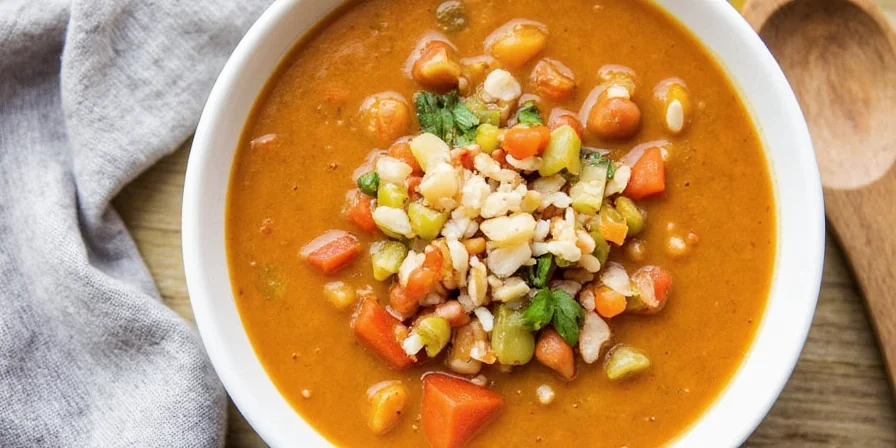
Tip #1: Broth vs Stock - What Actually Matters for Bean Soup
Forget complicated distinctions - here's what works for bean soup:
| When to Use | Best Choice | Pro Tip |
|---|---|---|
| Quick weeknight soup | Good quality vegetable broth | Add 1 tbsp nutritional yeast for instant depth |
| Weekend cooking project | Mushroom stock | Simmer dried mushrooms for 20 minutes before adding beans |
| Emergency pantry meal | Water + extra umami boosters | Double tomato paste and add miso at the end |
For immediate flavor impact in bean soup, choose vegetable broth. For deeper complexity, use mushroom stock. Your bean soup needs rich liquid foundation - this makes the biggest difference in final taste.
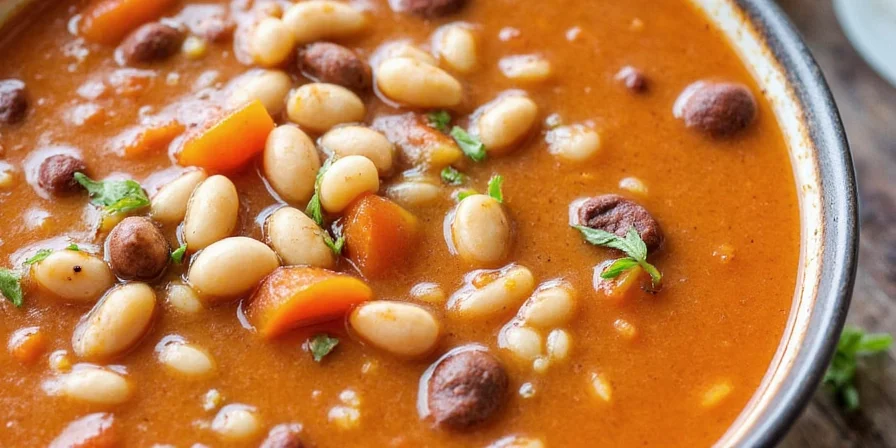
Tip #2: The 2-Minute Spice Toast That Changes Everything
Don't skip this critical step - properly toasting spices takes 2 minutes and doubles flavor impact:
- Heat dry pan on medium (no oil needed)
- Add whole spices (cumin seeds, coriander) and stir 60-90 seconds until fragrant
- Transfer immediately to mortar or spice grinder
Why it works: Dry toasting releases essential oils that water-based cooking won't activate. This simple step makes spices 40% more flavorful without extra ingredients.

Tip #3: The Flavor Layering Mistake 90% of Cooks Make
Most home cooks add everything at once. For maximum flavor, layer ingredients in this order:
- Sauté onions/garlic in oil first (creates flavor base)
- Add toasted spices to hot oil (blooms flavors)
- Stir in tomato paste (adds acidity)
- Add broth and simmer 10 minutes
- Add beans last (preserves texture)
This sequence builds flavor layers instead of muddling everything together. Your bean soup will have distinct, complex tastes rather than one flat note.
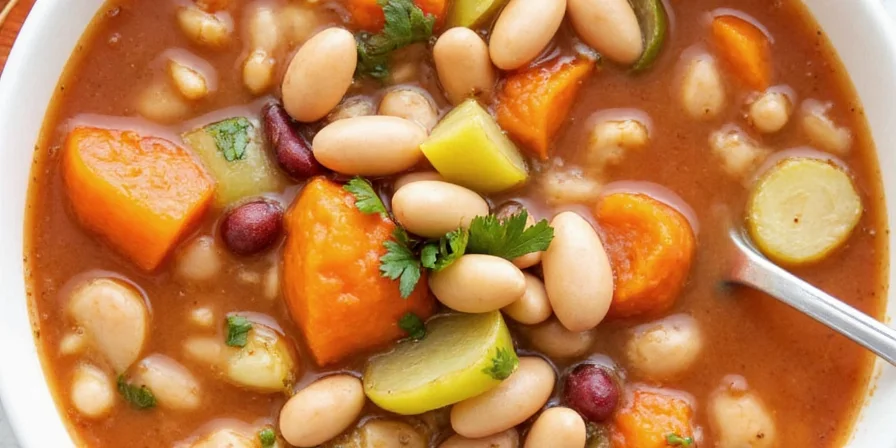
Tip #4: Acid Timing Secrets for Brighter Soup
Acid is the secret weapon for bland bean soup, but timing matters:
- Add vinegar or lemon juice in the last 10 minutes of cooking
- Start with 1 teaspoon per quart of soup
- Taste and adjust before serving
Why it works: Acid wakes up flat flavors by balancing richness. Too early and it cooks off; too late and it dominates. This simple adjustment makes bean soup taste restaurant-quality.
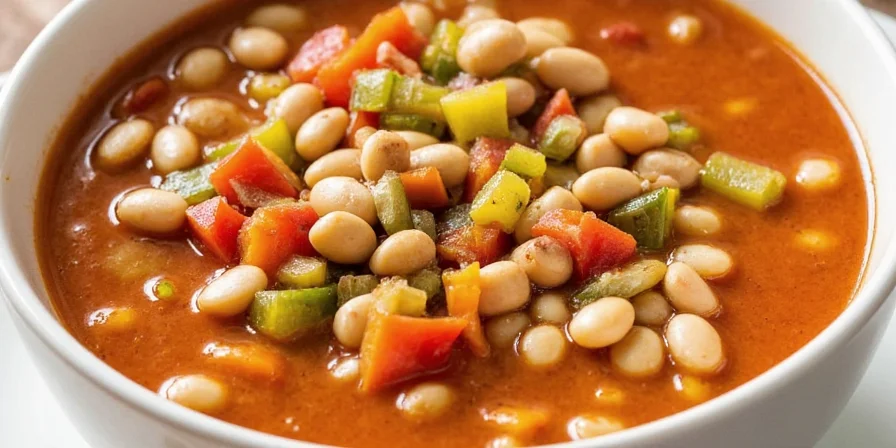
Tip #5: Fresh vs Dried Herbs - When to Use Which
Using the wrong herb type at the wrong time ruins flavor. Here's the simple rule:
| Herb Type | When to Add | Best For Bean Soup |
|---|---|---|
| Dried herbs | With spices at beginning | Thyme, oregano, rosemary |
| Fresh herbs | In last 5 minutes | Parsley, cilantro, basil |
Dried herbs need time to rehydrate and release flavor. Fresh herbs lose their brightness when cooked too long. Follow this timing for perfect herb flavor in bean soup every time.

Tip #6: 3 Pantry Umami Boosters (No Meat Required)
Transform bland bean soup with these easy umami sources:
- 1 tablespoon miso paste (stir into finished soup)
- 2 tablespoons tomato paste (cook with spices)
- Handful of dried mushrooms (simmer with broth)
Why it works: These ingredients contain natural glutamates that create savory depth. No special ingredients needed - everything comes from your pantry. Your bean soup will taste richer without adding meat.
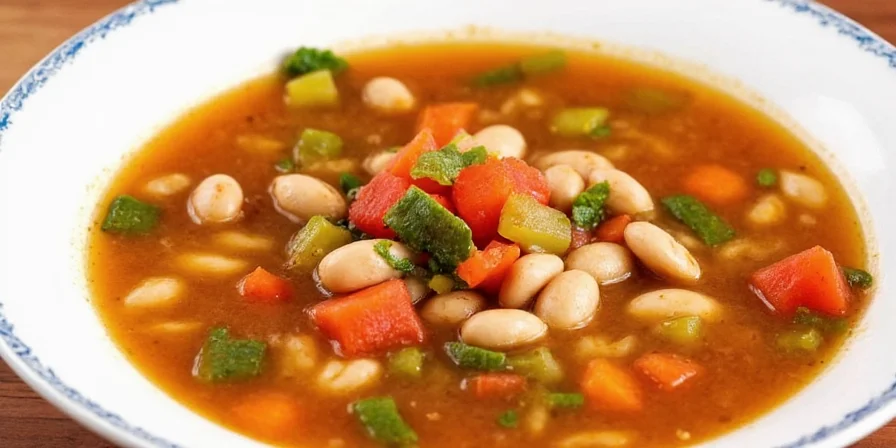
Tip #7: Heat Control for Balanced Spice
Don't just add chili powder - create balanced heat with these techniques:
- Add cayenne with spices at beginning (mellows during cooking)
- Stir in fresh chopped chilies in last 10 minutes (bright heat)
- Finish with red pepper flakes (textural heat)
Layering different heat sources creates complexity rather than just making soup spicy. You'll get warmth throughout each bite instead of one-dimensional heat.
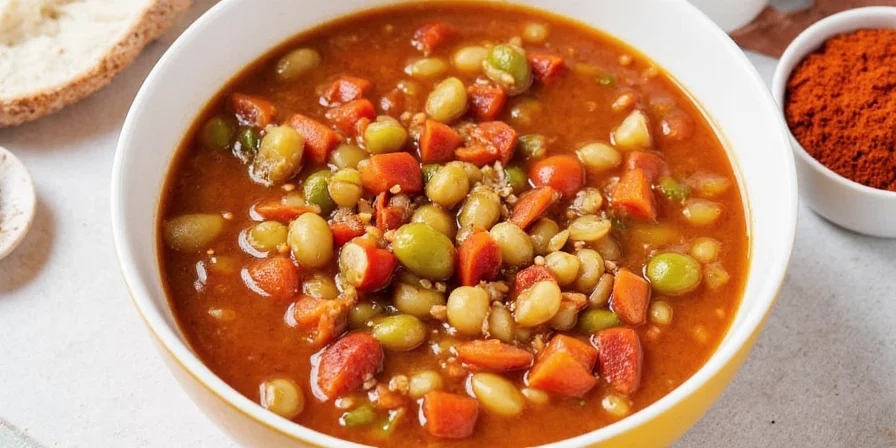
Tip #8: The Roasting Shortcut Most Skip
Roasting vegetables before adding to soup takes just 15 extra minutes but doubles flavor:
- Cut carrots, celery, onions into 1-inch pieces
- Toss with olive oil and roast at 400°F for 15 minutes
- Add directly to soup pot
This caramelizes natural sugars, creating deeper flavor in your bean soup. The small time investment pays off with restaurant-quality results.
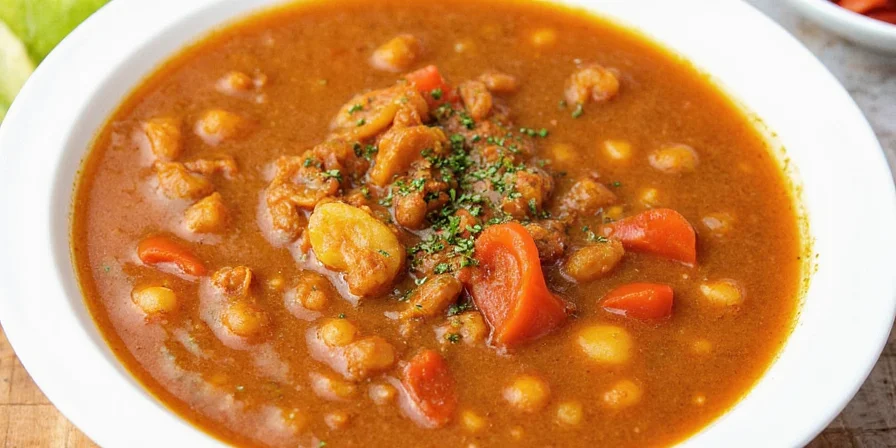
Tip #9: Salt Timing That Makes or Breaks Flavor
Salt at these three critical points for perfect seasoning:
- Pinch when sautéing vegetables (draws out moisture)
- 1/4 teaspoon per cup when adding broth
- Final adjustment before serving
Canned beans need 30% less salt. Always finish with a final taste and adjustment - this makes the difference between good soup and great soup.

Tip #10: The Taste-Adjust Cycle Professionals Use
Follow this timing for perfect flavor balance:
- After broth addition (check salt level)
- After 15 minutes of simmering (check spice balance)
- Before serving (final acid adjustment)
Make small adjustments each time. Great bean soup hits all flavor notes - salty, sweet, sour, bitter, umami - in perfect harmony. This cycle ensures balanced taste.

Troubleshooting Common Bean Soup Problems
| Problem | Quick Fix | Prevention |
|---|---|---|
| Soup tastes flat | Add 1 tsp vinegar + pinch of sugar | Layer flavors properly |
| Too salty | Add potato chunks and simmer 10 mins | Season gradually |
| Bland beans | Stir in 1 tbsp miso paste | Add umami boosters early |
| Too thin | Mash some beans against pot side | Use proper bean-to-liquid ratio |
Conclusion: Your Path to Perfect Bean Soup
Creating extraordinary bean and vegetable soup doesn't require fancy ingredients or professional training. Focus on these three priorities:
- Build flavor layers in the right sequence
- Use acid and salt at precise moments
- Make small adjustments throughout cooking
Start with one technique that solves your biggest problem. Master that, then add another. Within weeks, your bean soup will taste like it came from a professional kitchen - no science degree required.
Remember: great soup balances simplicity with smart technique. You don't need complexity - just the right moves at the right time. Your perfect bean soup is closer than you think.
Frequently Asked Questions
- Why does my bean soup taste bland even with spices?
- Most cooks add spices directly to liquid instead of blooming them in oil first. Toast spices in dry pan for 90 seconds, then stir into hot oil before adding liquid. This simple step unlocks 40% more flavor from your spices.
- How can I fix bland bean soup without special ingredients?
- Add 1 teaspoon vinegar or lemon juice in the last 10 minutes of cooking. This brightens flat flavors instantly. For deeper richness, stir in 1 tablespoon tomato paste during cooking or miso paste at the end.
- When should I add acid to bean soup?
- Add acid (vinegar, lemon juice) in the last 10 minutes of cooking. Adding too early makes the flavor cook off; too late makes it overpowering. Start with 1 teaspoon per quart and adjust to taste.
- How do I layer flavors in bean soup?
- Follow this sequence: 1) Sauté aromatics, 2) Add toasted spices to hot oil, 3) Stir in tomato paste, 4) Add broth and simmer 10 minutes, 5) Add beans last. This creates distinct flavor layers instead of muddling everything together.

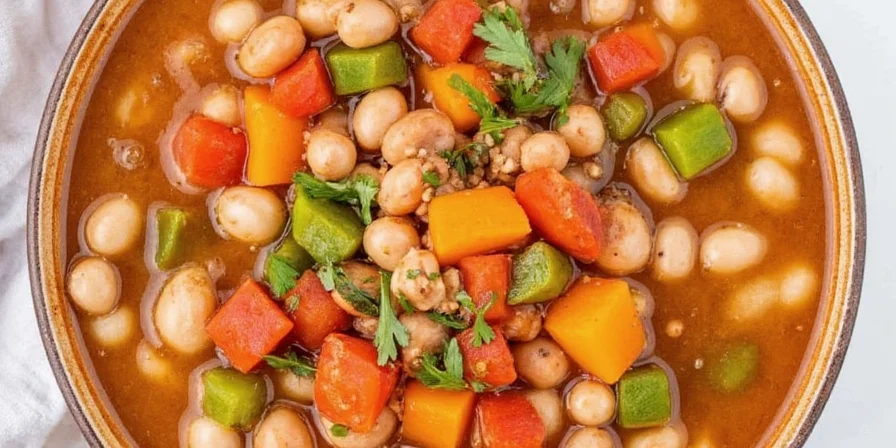









 浙公网安备
33010002000092号
浙公网安备
33010002000092号 浙B2-20120091-4
浙B2-20120091-4